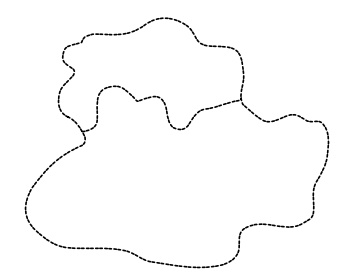Chapter: Genetics and Molecular Biology: DNA Synthesis
DNA Replication Areas In Chromosomes - Physiological Aspects
Physiological Aspects
DNA Replication Areas In Chromosomes
After considering the enzymology of the DNA
replication and repair processes, we turn to more biological questions. As a
first step, it is useful to learn the number of DNA synthesis regions per
bacterial or eukaryotic chromosome. To see why this is important, consider the
two extremes. On one hand, a chromosome could be duplicated by a single
replication fork traversing the entire stretch of a DNA molecule. On the other
hand, many replication points per chromosome could function simultaneously. The
requisite elongation rates and regulation mecha-nisms would be vastly different
in the two extremes. Furthermore, if many replication points functioned
simultaneously, they could be either scattered over the chromosome or
concentrated into localized replica-tion regions.
The most straightforward method for determining the
number of replication regions on a chromosome is electron microscopy. This is
possible for smaller bacteriophage or viruses, but the total amount of DNA
contained in a bacterial chromosome is far too great to allow detection of the
few replication regions that might exist. The situation is even worse for
chromosomes from eukaryotes because they contain as much as one hundred times
the amount of DNA per chromosome as bacteria. The solution to this problem is
not to look at all the DNA but to look at just the DNA that has been replicated
in the previous minute. This can easily be done by autoradiography. Cells are
administered highly radioactive thymidine, and a minute later the DNA is extracted
and gently spread on photographic film to expose a trail which, upon
development, displays the stretches of DNA that were synthesized in the
presence of the radioactivity.
The results of such autoradiographic experiments
show that cultured mammalian cells contain DNA synthesis origins about every
40,000 to 200,000 base pairs along the DNA. In bacteria, the result was
different;

Figure
3.11 Sketch of an electronmicrograph
of an autoradiograph of a partially replicated bacterial chromo-some that has
been labeled with radioactive precursor for 40 minutes before extraction of DNA
and prepa-ration.
administration of a short pulse of radioactive
thymidine was unneces-sary. When thymidine was provided for more than one
doubling time, the entire chromosome of the bacterium could be visualized via
the exposed photographic grains. Two startling facts were seen: the chro-mosome
was circular, and it possessed only one or two replication regions (Fig. 3.11).
The existence of a circular DNA molecule containing
an additional segment of the circle connecting two points, the theta form, was
inter-preted as showing that the chromosome was replicated from an origin by
one replication region that proceeded around the circular chromo-some. It could
also have been interpreted as demonstrating the existence of two replication
regions that proceeded outward in both directions from a replication origin.
Some of the original autoradiographs pub-lished by Cairns contain suggestions
that the DNA is replicated in both directions from an origin. This clue that
replication is bidirectional was overlooked until the genetic data of Masters
and Broda provided solid and convincing data for two replication regions in the
E. coli chromo-some.
Related Topics